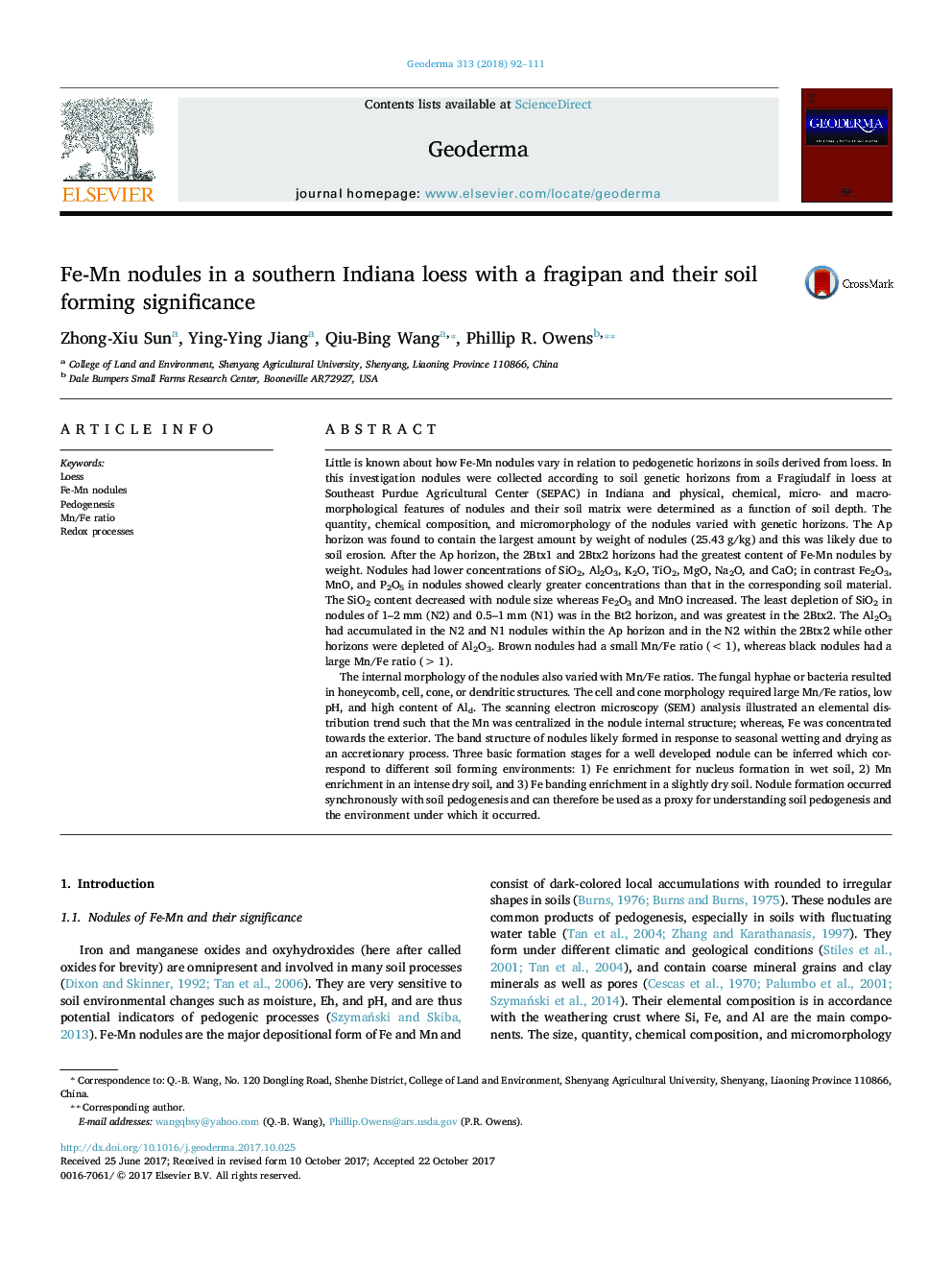| Article ID | Journal | Published Year | Pages | File Type |
|---|---|---|---|---|
| 8894339 | Geoderma | 2018 | 20 Pages |
Abstract
The internal morphology of the nodules also varied with Mn/Fe ratios. The fungal hyphae or bacteria resulted in honeycomb, cell, cone, or dendritic structures. The cell and cone morphology required large Mn/Fe ratios, low pH, and high content of Ald. The scanning electron microscopy (SEM) analysis illustrated an elemental distribution trend such that the Mn was centralized in the nodule internal structure; whereas, Fe was concentrated towards the exterior. The band structure of nodules likely formed in response to seasonal wetting and drying as an accretionary process. Three basic formation stages for a well developed nodule can be inferred which correspond to different soil forming environments: 1) Fe enrichment for nucleus formation in wet soil, 2) Mn enrichment in an intense dry soil, and 3) Fe banding enrichment in a slightly dry soil. Nodule formation occurred synchronously with soil pedogenesis and can therefore be used as a proxy for understanding soil pedogenesis and the environment under which it occurred.
Related Topics
Physical Sciences and Engineering
Earth and Planetary Sciences
Earth-Surface Processes
Authors
Zhong-Xiu Sun, Ying-Ying Jiang, Qiu-Bing Wang, Phillip R. Owens,
